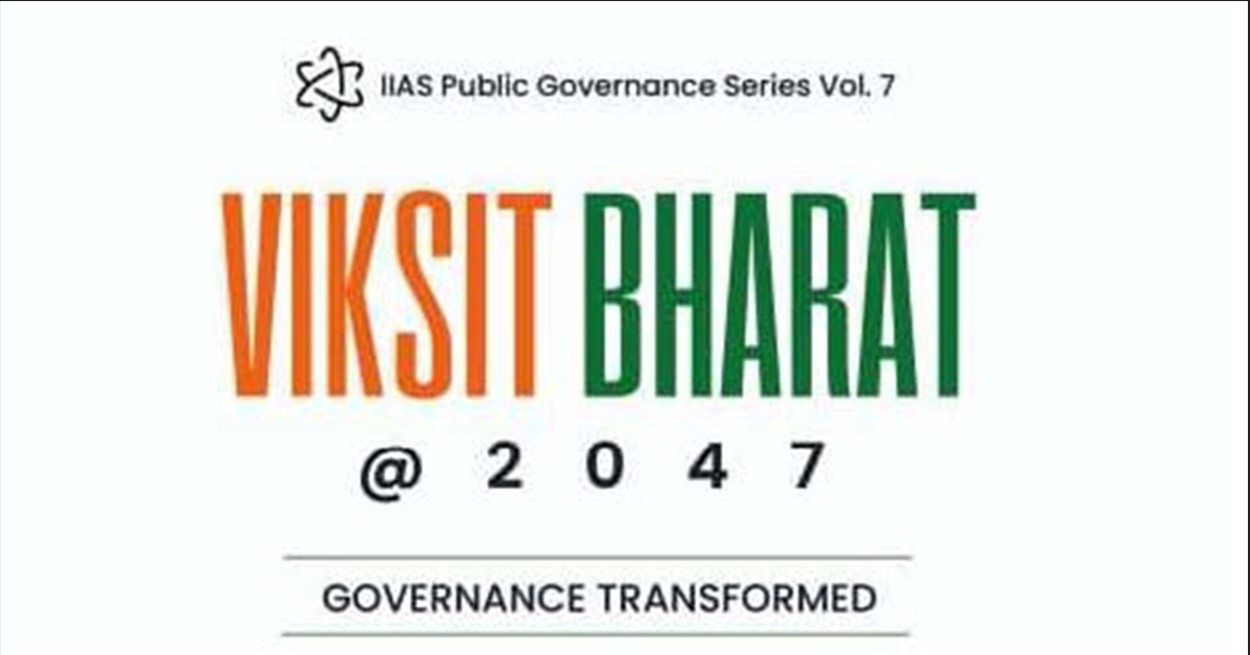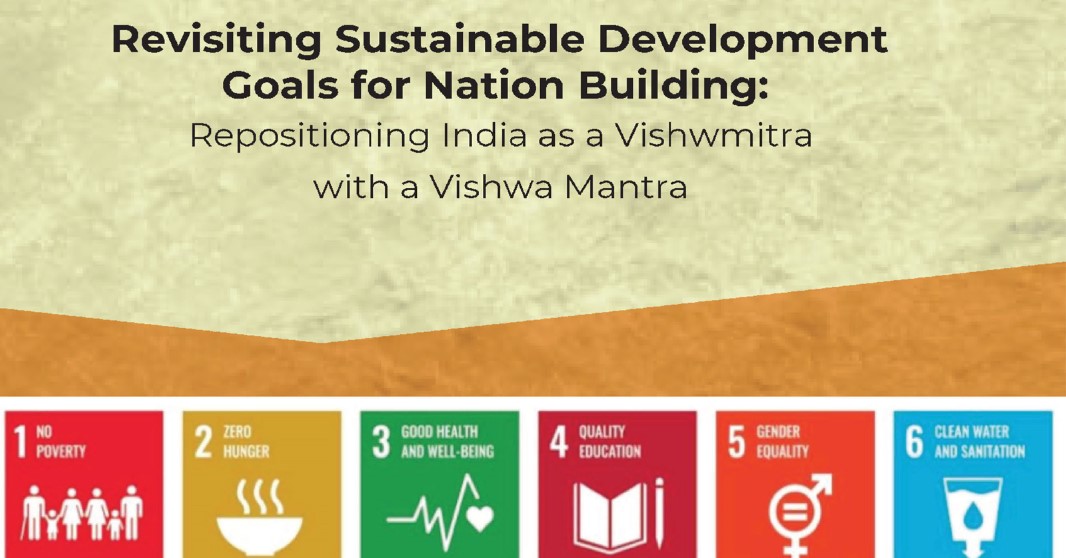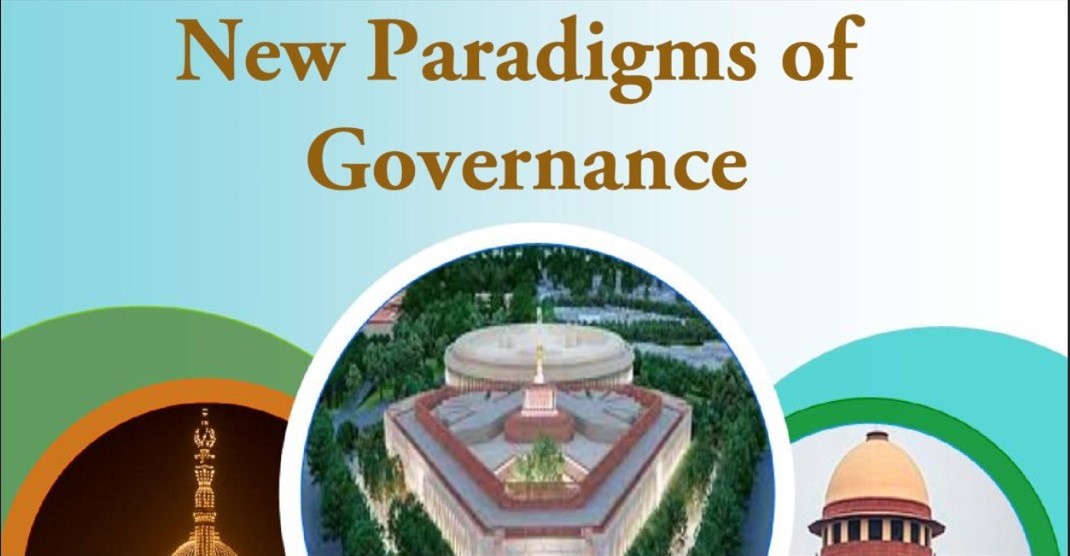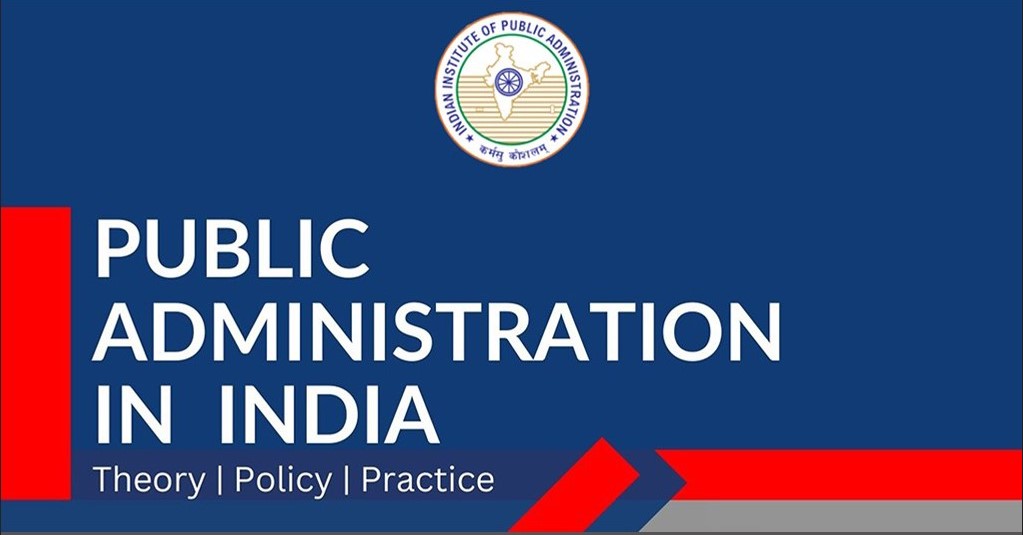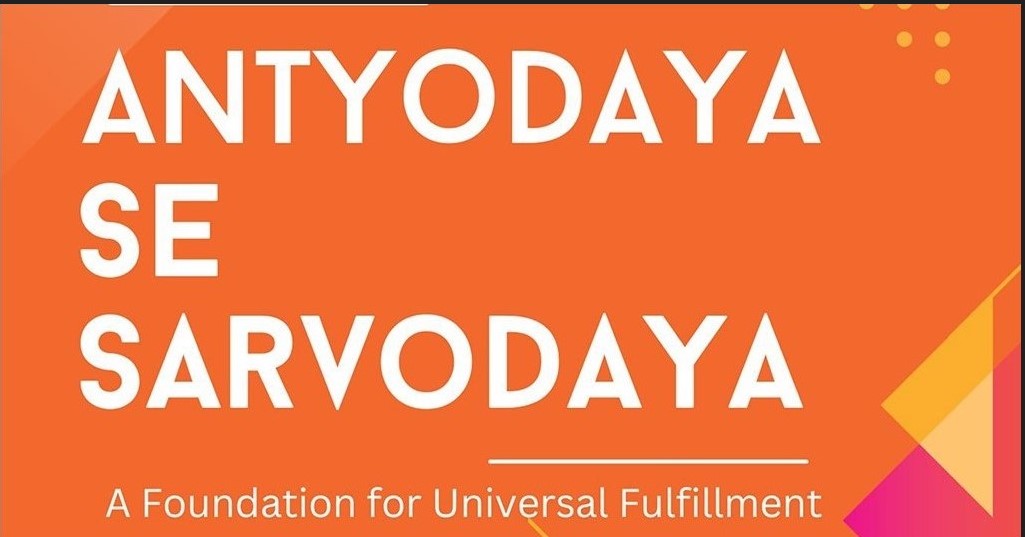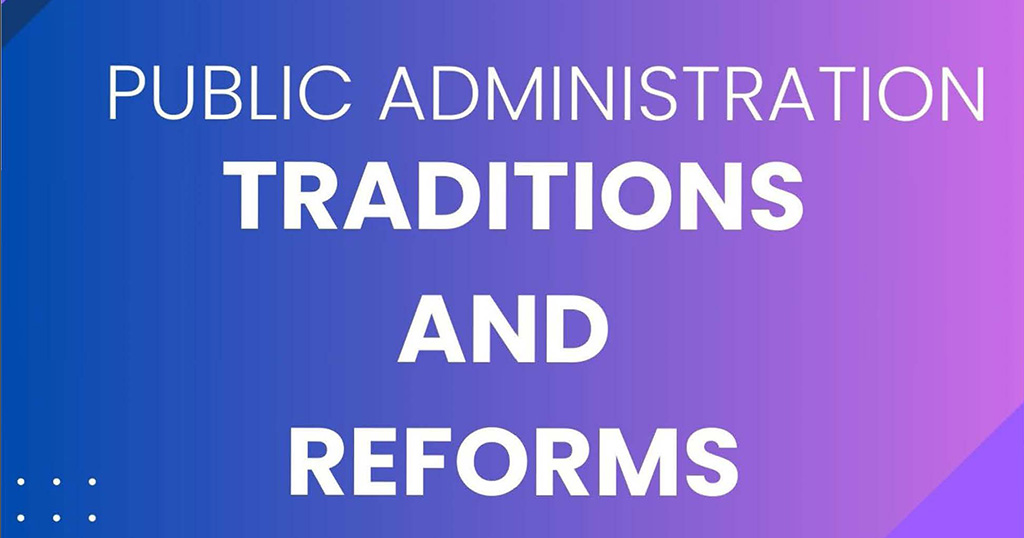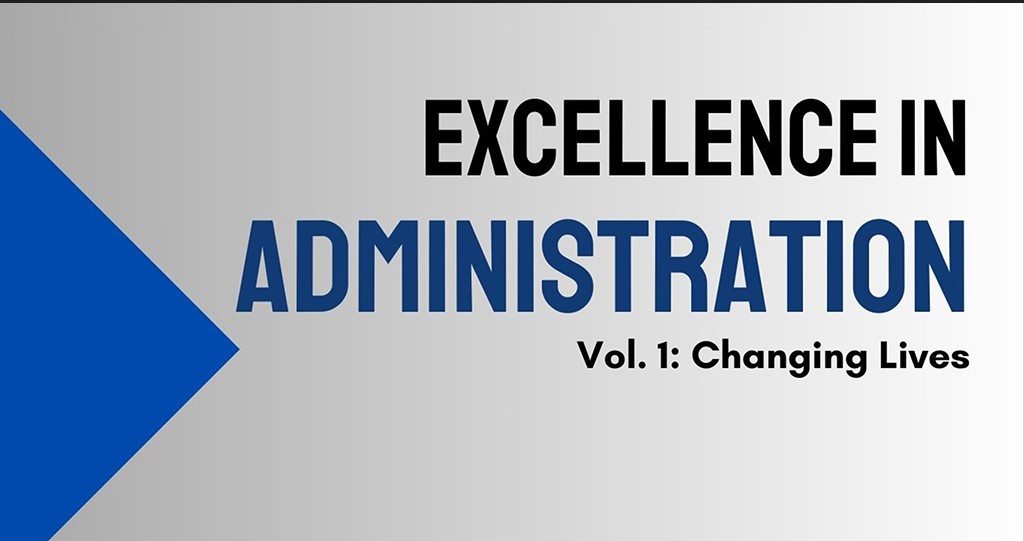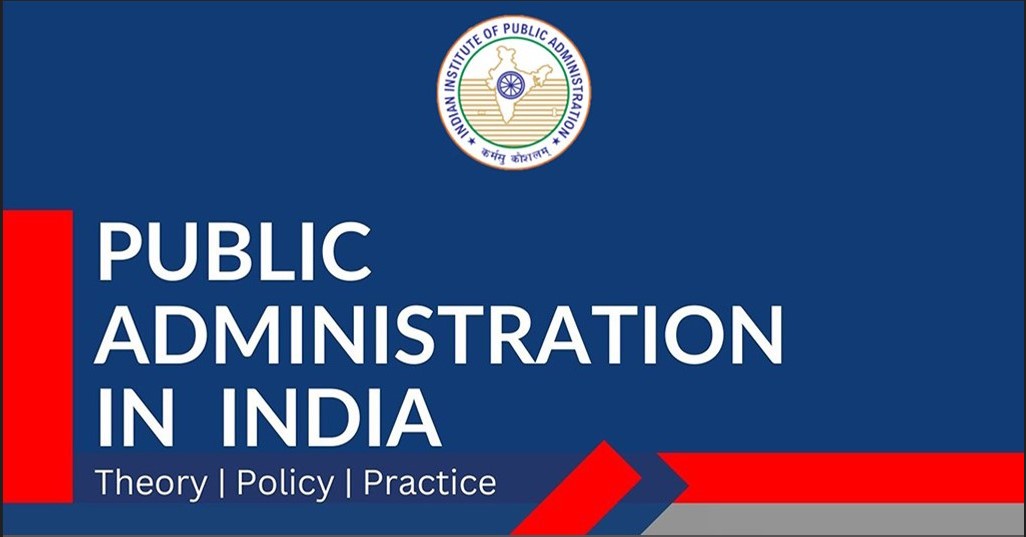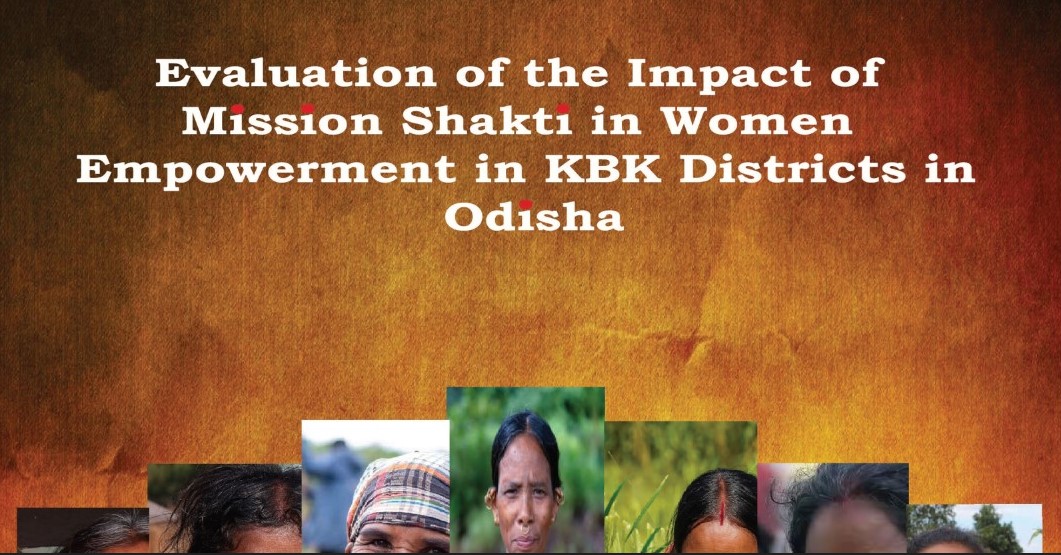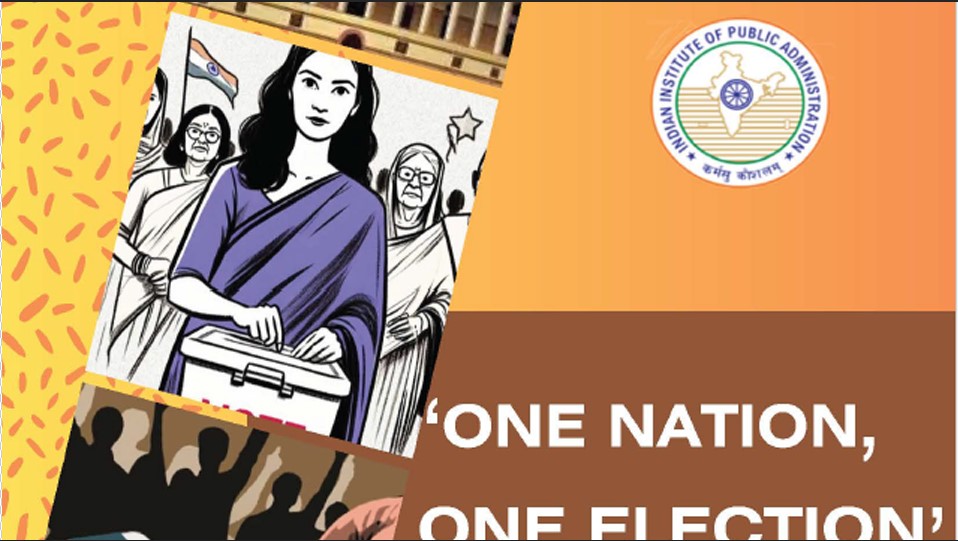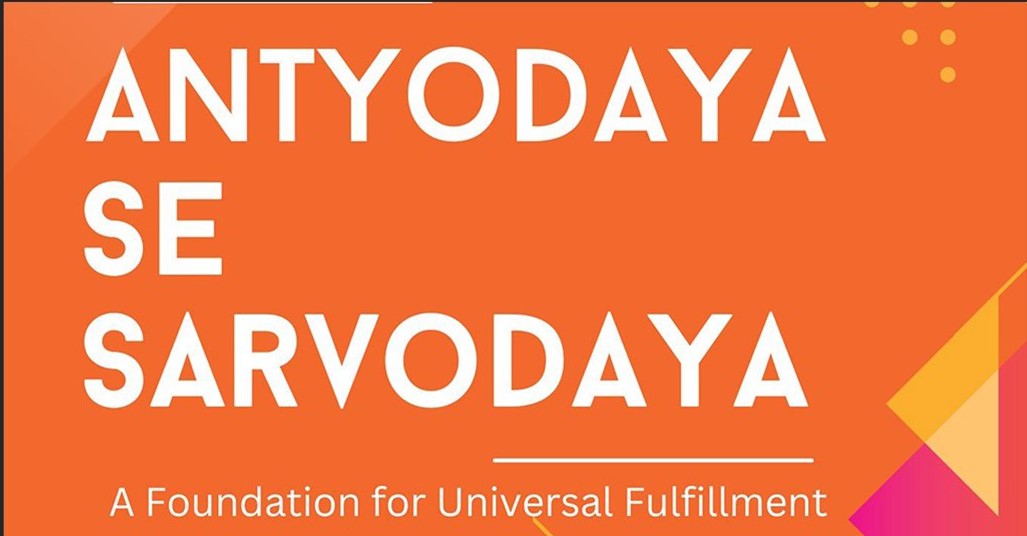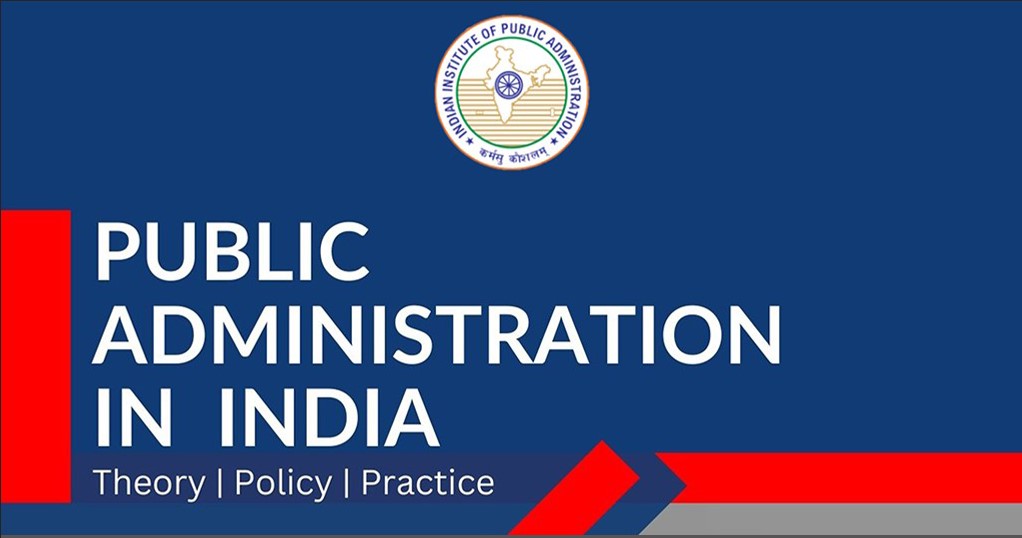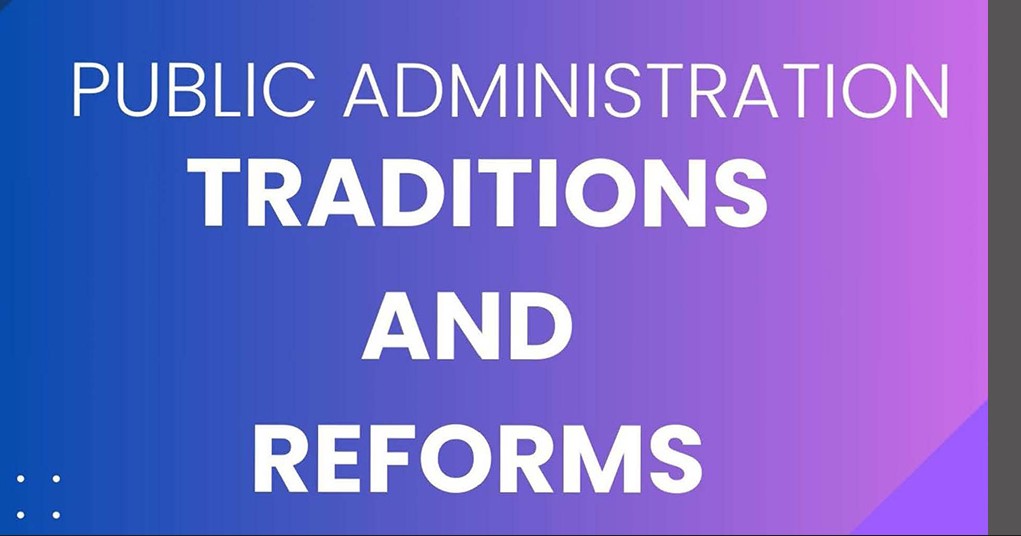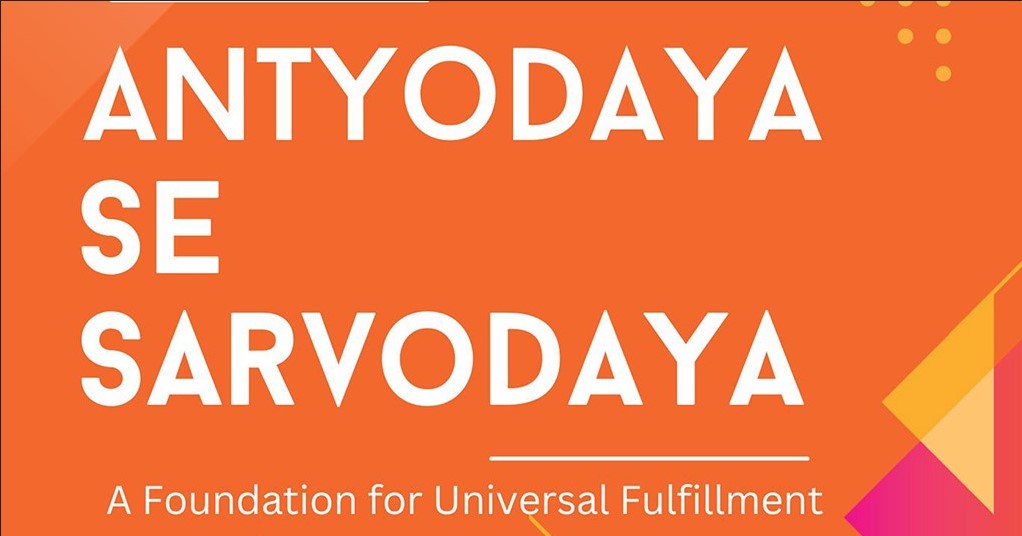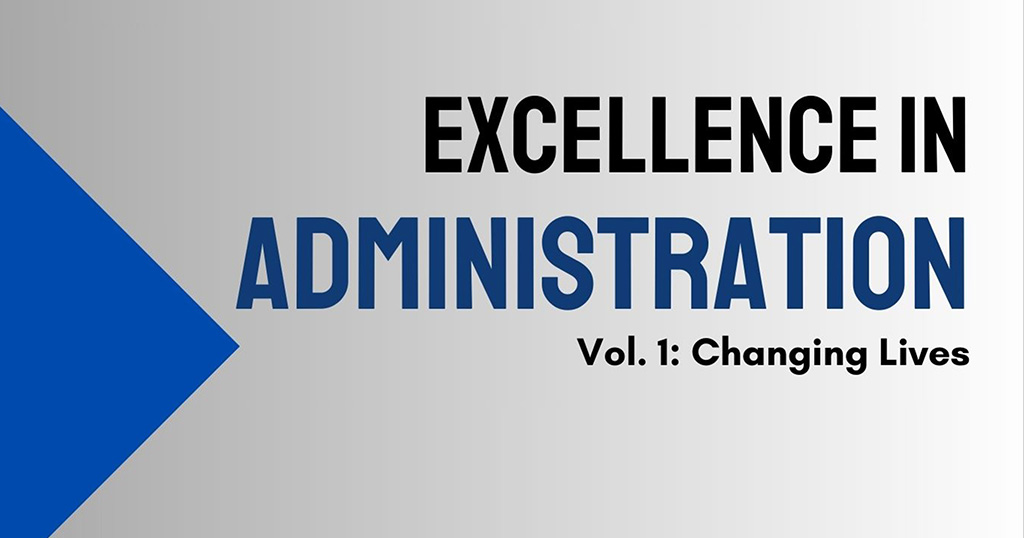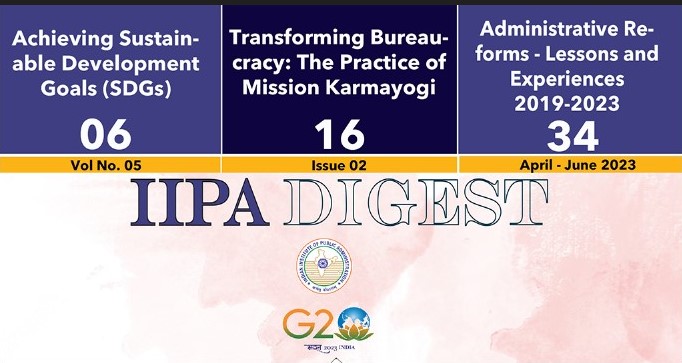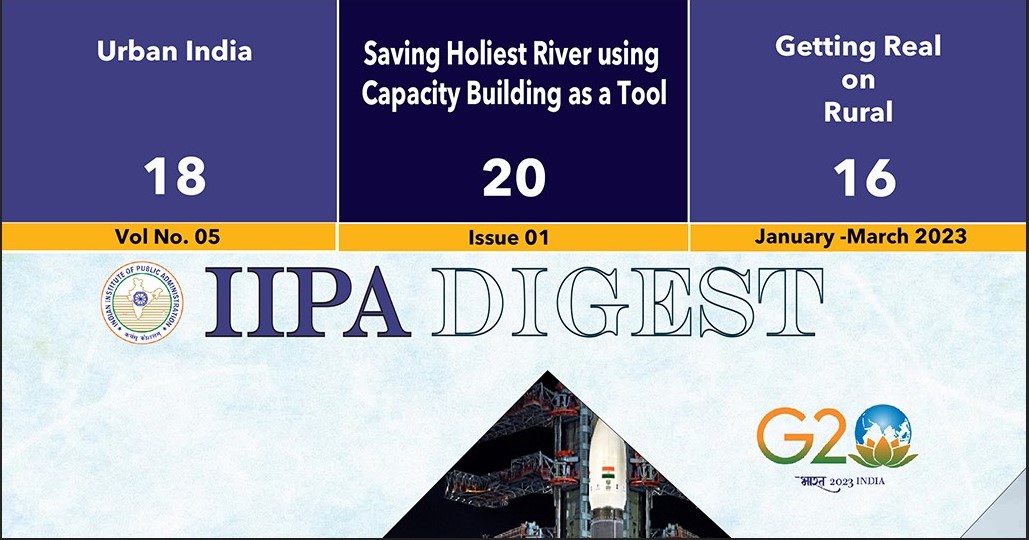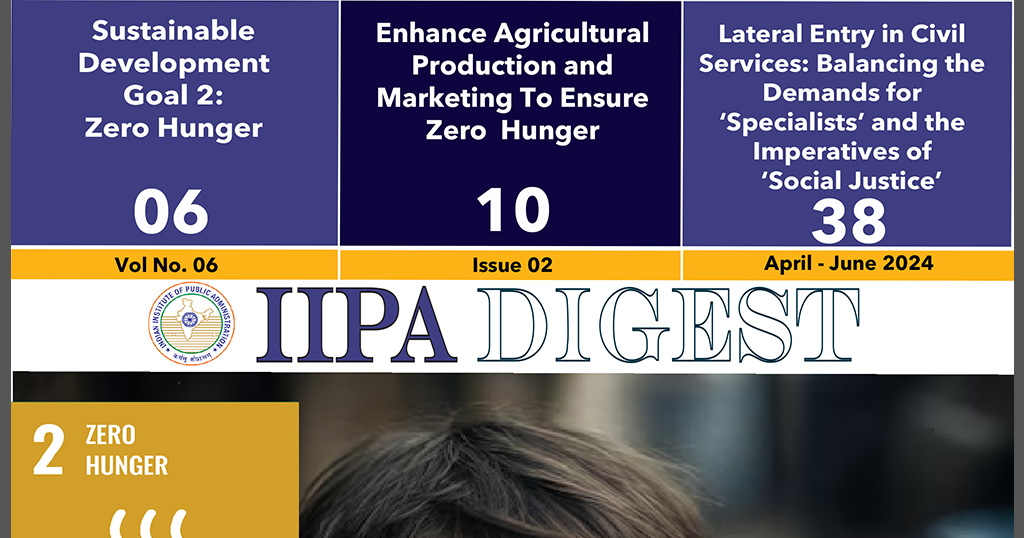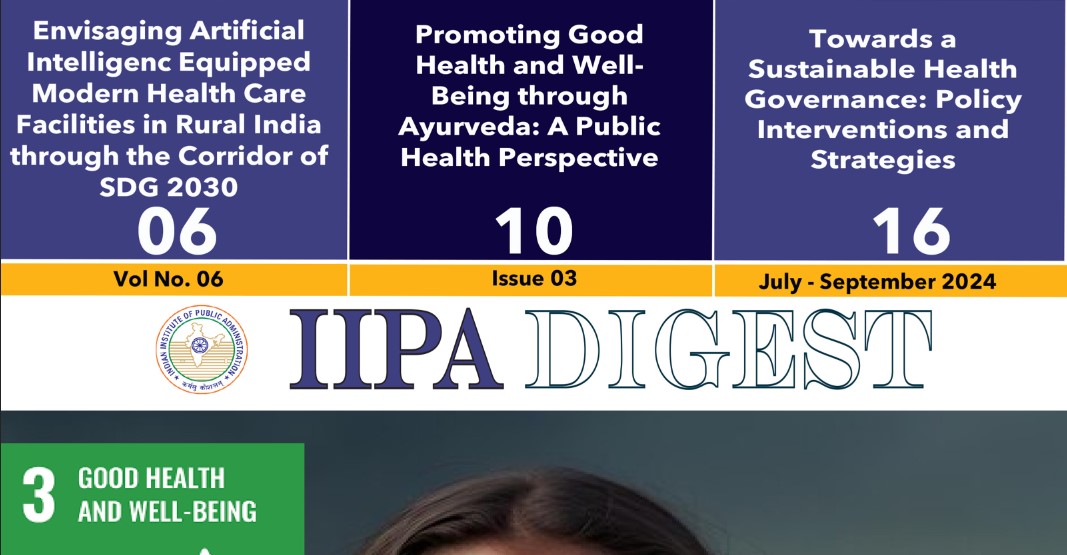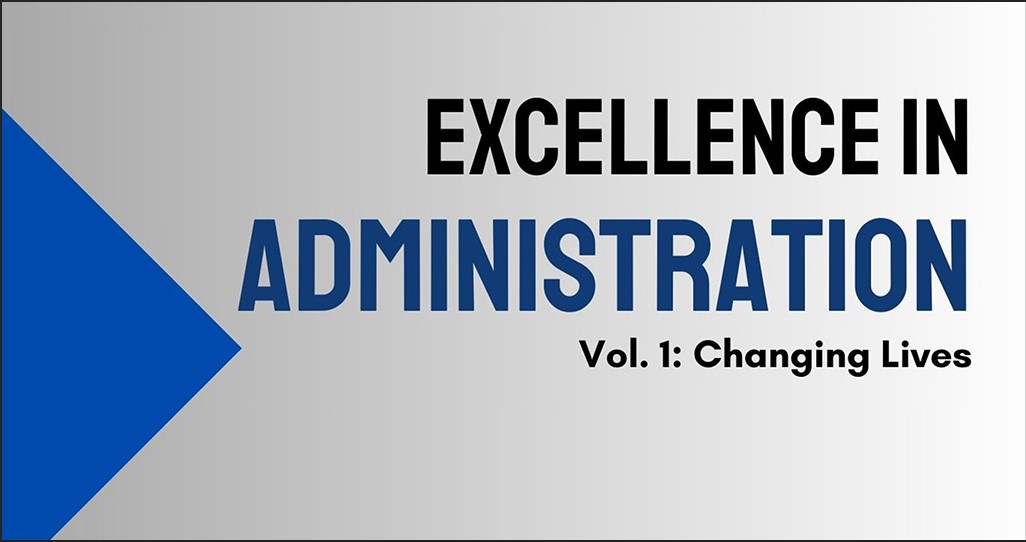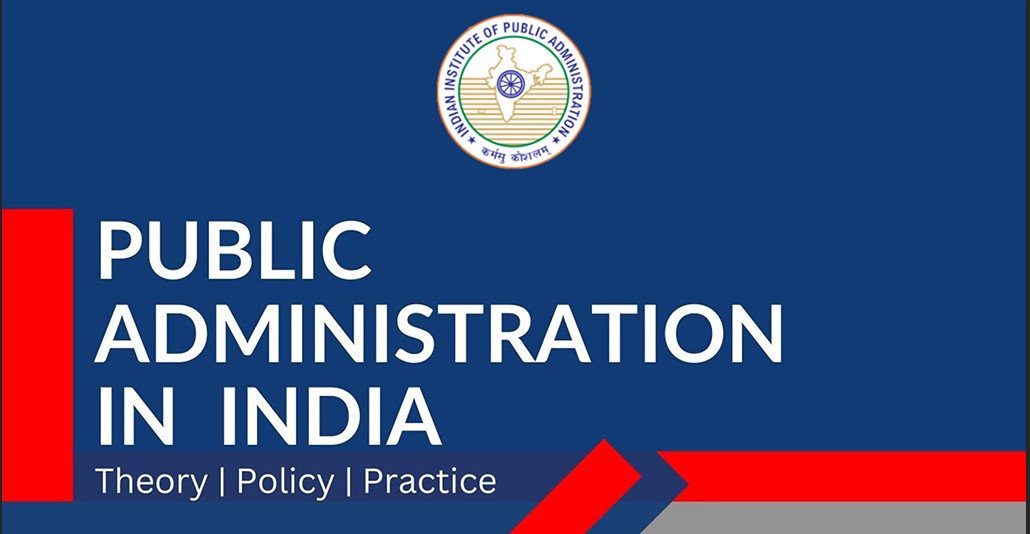Administrative Reforms in India Since Independence
19. Introduction
One of the most common public initiatives of all governments worldwide has been administrative reform. In response to the challenges posed by the political and socioeconomic environments, every country aims to improve its administrative systems. The term "administrative reforms" describes improving an administrative system's ability to accomplish its objectives. It's the "artificial inducement of administrative transformation against resistance." Although administrative reform encompasses more than just basic systemic changes, reforming a system entails a change in its "form." It has a significantly broader scope and includes changes in the administrative system's structure, processes, and behaviour, among other components. The foundational idea behind such changes is that only an administrative system that constantly renews itself will have the capacity to respond to and even lead its socioeconomic environment. The administrative system will become less effective if this reform process is not continued.
India, as one of the most powerful countries with a huge population, is working to transform its administrative structure. However, these reforms have faced a number of difficulties in recent years, despite their apparent significance since independence due to the resistance to change from the political leadership and bureaucracy. Administrative reforms can only succeed if there is political and administrative will. Political leaders must initiate such reforms by establishing relevant laws, and bureaucratic institutions or administrators must carry them out successfully. However, most administrative reforms have political consequences as they alter the power dynamics of the actors. Since changes would combat unethical behavior, corruption, nepotism, and other issues, politicians usually oppose them. Another reason for this opposition is due to the pressure from the powerful bureaucratic lobby. As a result, there is always going to be resistance to change from the country's political leadership and other parties whose interests can be significantly impacted.
However, bureaucracy also opposes reforms because it believes that they could weaken their positions and leave them with less authority and status. Their bureaucratic culture and ethics will be undermined by the reforms. This rigidity of bureaucracy, their resistance to change, and the refusal of political executives to reform the administration, has resulted in very few successful reforms.
Despite this, many committees were set up to give their recommendations regarding administrative reforms in India. The fundamentals in the administration have been constantly reinstated strongly with the significant developments, through various dynamic Indian administrative reforms with the time. The First Administrative Reform Commission and the Second Administrative Reform Commission has brought into one of the most significant changes in the Indian administrative system.
19.1 Meaning and Nature of Reforms
Administrative reforms in India date back to January 5, 1966. They were set up by the Indian government to guarantee system efficiency and transparency as well as the eradication of bias and corruption. The government set up a number of committees and commissions to investigate various aspects impacting the country’s development and to provide a report with recommendations for implementing reforms. The premise was that in order to provide Indian citizens with the best possible governance and support, the administration needed to be proactive, effective, and responsive.There is no doubt that in recent years, the reforms have been revamped at all government levels as per need, which led to the 2nd ARC.
19.2 Reforms after Independence
Following independence, India adopted a federal system of governance. The partition and federation system required fundamental administrative reforms. Both the central and state governments recognized the need for these reforms to establish a new political, social, and economic order and to meet the people's aspirations. A number of factors had a role in India's administrative reform issue. The immense size and diversity of the Indian population was one of these. The other factors that contribute to the complications in administrative reforms were: First, the British legacy which left a pre-independence heritage in which the wishes of the people were completely ignored. Second, the Indian Government adopted the goal of welfare state, which is always evolving, requiring the administration to keep adjusting to these changes.
The British administration was mainly regulator in nature and catered to the requirements of the British empire mainly focusing on maintenance of law and order and collection of revenue. Development priorities were not defined. The bureaucratic model was Rule Book bureaucracy. It lacked people’s participation and which mainly remained ineffective and inefficient. It cannot be denied that the nature and extent of reforms vary according to the magnitude of the problem. As has been done in the past, reforms can be conceived both at the centre and state levels
19.3 Early Era Reforms (1950s–early 1960s)
Independent India’s main challenge regarding administrative reforms was getting the bureaucracy to work on adapting to a parliamentary-federal constitution and undertaking the responsibility of promoting electoral democracy and economic development with justice and equity. Through centralized yet democratic planning, the economic development strategy was founded on import-substituting and nationally self-reliant industrialization within the framework of a mixed economy in which the state or public sector would play a key role. Significant contributions to the subject of administrative reform came from the commissioned studies of the Planning Commission-appointed team, which was chaired by retired ICS officer A.D. Gorwala and American Public Administration specialist Paul H. Appleby.
Gorwala submitted two reports: Report on Public Administration (1951) and Report on the Effective Management of State Enterprises (1951). Paul Appleby also published Public Administration in India - Report of a Survey (1953) and Re-Examination of India's Administrative System with Special Reference to the Administration of Government's Industrial and Commercial Enterprises (1956). The intended economic growth program was formalized by Prime Minister Jawaharlal Nehru based on the recommendations of Gorwala committee. This was done in the framework of a "mixed" economy, which includes a dominant state sector and some room for private enterprise.
In 1953 by Prof. Paul H. Appleby, Dean, Maxwell School of Citizenship and Public Affairs, Syracuse University, New York and a Consultant with the Ford Foundation, invited to advice on the subject, by the Government of India. Paul H. Appleby submitted two reports on Indian Administration. The topic of general public administration was covered in the Appleby reports. Paul Appleby report recommended establishing a semi-governmental Indian Institute of Public Administration for the study and practice of public administration in New Delhi, establishing Organization & Method (O & M) divisions at different governmental levels, and streamlining the hiring and training of administrators as well as their relations with the Comptroller & Auditor General of India, the Parliament/State Legislatures and Planning Commission were the primary recommendations of these reports. These measures were put into effect right away.
In March 1964, the Department of Administrative Reforms was established as a think tank under the Home Ministry to advance governmental changes. Over the administrative framework that was primarily carried over and modified from the British colonial state in India, independent India embraced a parliamentary-federal system of governance. To give a boost to the socio- economic development In March 1950, the Government of India established the Planning Commission with the then Prime Minister as its Chairman. He also chaired the National Development Council, which was established in August 1952 with the executive heads of all state and union territory governments. Its goals were "to strengthen and mobilize the effort and resources of the nation in support of the five-year plans, to promote common economic policies in all essential spheres, and to ensure rapid development of the nation.
A progressive set of labor laws, reservations for scheduled castes, tribes, and other backward classes, poverty alleviation programs, the promise of a welfare state outlined in the Directive Principles of State Policy of the constitution, the establishment of the fundamental framework and tradition of free and fair elections by the constitutionally established autonomous Election Commission of India, and statutory institutions of local self-governments in both rural and urban areas are all noteworthy features of this early stage of political and economic development in independent India. These characteristics set India apart from other East Asian developmental states without a corresponding democratic component as a democratic-developmental state.
19.4 Reforms During the Mid-1960s-80s
The process of nation building began soon after the independence. A no of institutions were established. The foundations of democratization of independent India were laid during the early years of independence. The Nehru era ended in 1964. It led to a thorough evaluation of Indian governance and administration established under the 1950 Indian Constitution and Prime Minister Jawaharlal Nehru's Government from 1946–1964. There were two important documents the reports of the Commission on Center-State Relations and the Administrative Reforms Commission-I which dominated the reformist debate during this period. There are various factors that led to the formation of these two commissions in the middle of the 1960s and the beginning of 1980. The ARC-I conducted the first significant evaluation of the administrative machinery in response to the administrative degradation that was apparent during the early post-Nehru period.
19.5 First Administrative Reforms Commission
During the first 10 years after independence, the nation had inherited an administration with its law and order and partition as well as the new charter of responsibilities of social and political development. These were thrust upon the country along with the adoption of the ideology of welfare state. The country needed a well-defined framework to ensure its rapid development. This called for administrative reforms that would eventually lead to the creation of a consistent system across all states and districts. On 5th January 1966, Prime Minister Lal Bahadur Shastri established the Administrative Reforms Commission (ARC-1), which had five members all except a senior civil servant, sitting members of parliament and was chaired by Shri Morarji Desai.
The ARC aimed to modernize India's public administration by improving its efficiency, responsiveness, and integrity. It focused on enhancing governance structures, streamlining processes, and promoting socio-economic development. The commission's recommendations, detailed in numerous reports, covered various aspects like recruitment, training, financial management, and citizen grievance redressal. The ARC set up 20 study teams, 13 working groups and one task force. Over the years 1966–1970, it produced twenty reports with a total of 581 recommendations.
The mandate was developed to outline the structure of government bodies and services. The bodies were in charge of enacting economic and social policies to ensure citizens' development and growth. The commission provided a total of 19 reports focused on several verticals. Officials were expected to work intensively at all levels to ensure honesty and efficiency. Despite the fact that the mandate included all main components of the country's machinery, some were excluded from the commission. Separate commissions were established to maintain integrity at all levels.
It gave Reports on the following subjects:
• Machinery of Government of India and its procedures.
• Personnel Administration.
• Redress of Citizen’s Grievances.
• Centre-State Relations.
• State Administration.
• Administration of Union Territories.
• Machinery for Planning and Economic Administration.
• Finance, Accounts and Audit.
• Delegation of Financial and Administrative Powers.
• Railways, Post and Telegraph, etc.
19.6 Sarkaria Commission
The Justice R.S. Sarkaria Commission on Centre-State Relations was established in 1983 by the Indian government, marking another official attempt at administrative reform in the country. To address India's long-standing demand for more stable federal-state relations the Sarkaria Commission was established. The Commission was a strong proponent of all-India services and advocated for the formation of new ones. Agriculture, engineering, medicine, and education services were to be established throughout India. To quote the Commission, "any move to disband the all-India services or permit a state government to opt out of the scheme must be regarded as retrograde and harmful to the larger interest of the country." The Commission went into various areas like legislative, administrative and financial relations between the centre and the states. It addressed topics like the use of Article 356 and the governors' discretionary powers and offered suggestions for how to promote cooperative federalism.
19.7 Economic Administration Reforms Commission (EARC)
The Economic Administration Reforms Commission (EARC) was established in the early 1980s to make recommendations on reforms to the country's economic administration. Its chairman was L.K. Jha, an Indian Civil Service officer who specialized in the country's economic issues. The Economic Administration Reforms Commission brought about thirty-seven studies on a wide range of topics, including tax administration, industrial approval, rent control, the economy of public expenditure, the relation between the government and public businesses, and more. Though these works covered a wide range of topics, they were all about economic administration and shared certain common concerns.
Notably, the license-permit-control regime was losing credibility as early as the 1980s, and the seeds of liberalization were sown about this time. Perhaps the most remarkable contribution of the Economic Administration Reforms Commission, which reported in 1983, was its visionary advice to change the government ‘emphasis from regulation to development, purposefully shifting away from direct physical restrictions toward direct procedures. It raised concerns about some structural modifications in the machinery of government with a view to expediting the process of decision-making in economic administration. Two EARC reports on accountability and economy in public expenditure stand out, as they overlook issues raised during prior administrative reform in India.
19.8 National Commission to Review Working of the Constitution
One of the main commissions established by the Government of India in 2000 to examine how the Constitution or the country's administrative culture is functioning is the National Commission to Review Working of the Constitution (NCRWC). It was set up to examine the Constitution's effectiveness and suggest necessary amendments. Chaired by Justice M.N. Venkatachaliah, a former Chief Justice of India, the Commission's objective was to ensure the Constitution remained relevant and responsive to India's evolving needs. Its recommendations are more practical and feasible than all other its counterparts. The goal of NCRWC’s work on administration in India has been to help the country move forward and overcome its colonial hangover and status quo mentality. The NCRWC argued that the then-Indian Civil Services was created to drain Indian resources and maintain British colonial control in India. However, after independence, the regime changed. As the focus shifted from colonialism to welfarism, the then-ICS changed its attitude towards the welfare of the people.
According to the NCRWC, law and order have been a key concern. As a result, in order to boost its efficiency and effectiveness, as well as make it more people-oriented, law and order must be delegated to elected representatives at the district level, in accordance with the decentralization process in the Indian administrative system. The NCRWC also indicated that there is a need for more specialization in Indian civil services, i.e. moving beyond administrative culture. This emphasizes reduction in all higher-level positions. It focused on generalizing the specialists and specializing generalists.
It emphasized making administrative officials more receptive to discipline. It pushed for streamlining the safeguards outlined in Article 311 of the Constitution addition to the orientation change training and programs. It advocated that a control mechanism to combat corruption was also necessary. To do this, the Lok Pal institution must be established and strengthened in every manner. A framework for social auditing must also be developed to hold them more accountable. Furthermore, in terms of civil servants, it emphasized that non-performers must be ousted from the organization and available talent be hired on a contract basis. As a result, it encourages talented individuals to enter the organization.
It focused on rationalizing personnel management for civil servants. A Civil Services Board should be established to oversee the transfer, posting, promotion, and other concerns affecting civil servants. Career management should be planned and well-defined. Citizens' right to information was also an important emphasis of NCRWS. It stated that it comes with two patent advantages, namely transparency and accountability in the administration. The system of social auditing must be promoted. It emphasized the significance of protecting whistleblowers. To summarize, the NCRWC recommendations, if implemented in good faith, have the potential to transform India's government and civil services into a truly welfare-oriented model.
19.9 Second Administrative Reforms Commission
Prime Minister Manmohan Singh appointed the six-member Administrative Reforms Commission (ARC-II) in 2005. It was a commission of enquiry under the Chairmanship of Shri. Veerappa Moily and was formed to revamp India’s public administration system and suggest measures to achieve a proactive, responsive, accountable, sustainable, and efficient administration for the nation at all levels of the government.
The ARC submitted 15 volumes of reports in 2009.
After analyzing the experiences of reorganizing governments globally, the commission outlined the following lessons:
(a) The reform agenda has been pushed by political leaders from across parties.
(b) Emphasis was placed on focusing on key government services, right-sizing administration, and outsourcing.
(c) To promote competition in public service delivery, need to dismantle monopolies;
(d) Establishing government departments to carry out specific executive functions within a framework of policy and resources; (e) Decentralization, delegation, and devolution; (f) Public-Private Partnership; (g) Bureaucratic Deregulation; (h) Strengthening accountability mechanisms; (i) Electronic or e-governance for citizen empowerment;
(j) The Performance Management System (PMS), which is used to update personnel administration; (k) Citizens charters, efficient grievance redressal, the Right to Information, etc.
(l) encouraging the spread of good governance practices;
(m) Regulatory impact assessments and policy evaluations; (n) benchmarking for ongoing improvement; and (o) governance indicators that show the state of various social groups' quality of life, particularly that of the disadvantaged and less fortunate.
In the several volumes of its report, the panel has made particular suggestions pertaining to each of these administrative reform dimensions.
19.10 Working of the ARCs
The ARC was in charge of assessing almost every aspect of the Indian administrative system. The scope of the ARC was significantly broader than that of the Hoover Commission in the United States and the Royal Commission at the federal government level in their respective countries. However, the ARC in India surveyed the administrative system at all vertical levels, covering a wide range of functional areas. They Also monitored the implementation of previous recommendations and offered guidance to departments.
Following a thorough review of the report and recommendations by the members, the Government of India made the decision to address all issues. Now that the machinery is much more transparent and freer from corruption, businesses are thriving and people are living better lives. Since the second ARC report was submitted, various modifications have been made at all three levels of government. The public now has more faith in the government as a result of these reforms. Numerous portals are made to assist people, companies, and organizations that previously required paperwork or physical presence. Adoption of blue print as recommended by the 2nd ARC e governance has promoted a people centric governance and the citizens are reaping the fruits in transparent service delivery. For the benefit of its citizens, the government has posted all of the reports on its official website. It has been diligently working to enhance how public services and departments operate.
19.11 Financial Management Reforms
In essence, public finance management covers every facet of government spending and resource mobilization. With the economy being heavily burdened by growing population and consequently growing demands, Public Finance Management is crucial in today's era. However, it continues to be limited to accounting and reporting of the funds received and spent, managing payment systems, and implementing budgets. However, as modern financial management tools like IT and financial information systems are being used to improve efficiency and accountability, reforms have been introduced that place more emphasis on results and outcomes than just following processes. Additionally, the accrual accounting system is replacing cash-based accounting in order to increase efficiency, clarity, and transparency. These reforms aim to enhance fiscal discipline, ensure efficient resource allocation and improve service delivery.
19.12 Human Resources Development Reforms
Human Resource Development is a multifaceted process focused on enhancing individual and organizational capabilities through various learning and development initiatives. HRD’s goal is to improve skills of the employees, knowledge and performance. Focusing on skill development, emphasis on learning and development, promoting culture of learning and addressing the skill gap are key aspects of HRD in India. As previously stated, a number of commissions and committees were established to handle human resource development such as training and capacity building. Additionally, Pay Commissions were established to improve and suggest better recruitment and promotion procedures, terms of service, and other related matters. The reforms in the educational sector such as the establishment of central and state open schools and universities, the creation of a range of flexible and standardized distance learning courses, the enactment of the Right to Education Act, and the Knowledge Commission and Education for All Policy, were also implemented to aim to increase the human resource capacity of the nation.
There are a number of challenges and opportunities mainly due to large and diverse skill force, regional disparity, economic growth and skill requirements as well as leveraging technology. HRD plays a key role in India by shaping national human capital and economic development.
19.13 Next-generation Administrative Reforms
India has implemented a number of revolutionary administrative reforms in the last decade that have improved relations between the government and its citizens. The Prime Minister made a strong case for the implementation of next-generation administrative reforms for Viksit Bharat as India commemorated its 75th anniversary of independence. "Minimum Government-Maximum Governance," the government's motto, was the catalyst for the administrative reforms. The focus is on last mile connectivity. A number of technology-based applications have helped bridge the gap between the government and the citizens. The delivery of services has become transparent and timely thereby reducing corruption and the benefit reaching the intended beneficiary. The processes have enabled a responsive system.
19.14 E-Governance Models
The second Administrative Reforms Commission had made several recommendations and provided a blueprint for implementation of e governance in the country to make governance simple, more, transparent and accountable. Digital India is the flagship programme leading the technological innovation and change. Aiming to empower the nation digitally, the Digital India initiative was introduced in 2015.
Its main components are:
• Developing a secure and stable digital infrastructure
• Delivering government services digitally
• Achieving universal digital literacy
Today most of the public institutions have been digitally transformed. Transparency and openness have been successfully introduced into government operations through the Central Government's e-Governance models, such as Ayushman Bharat, PM's Jan Arogya Yojana, PM's Jan Dhan Yojana, One Nation One Ration Card, and Passport Sewa Kendra’s. The introduction of e office platform has improved the functioning of the public organizations to a large extent.
19.15 Centralized Public Grievance Redress and Monitoring System (CPGRAMS)
In a democracy redressal of citizen’s grievance is of prime importance. Citizens can use CPGRAMs, an online portal, to lodge complaints about any aspect regarding delivery of services. The Directorate of Public Grievances (DPG) and the Department of Administrative Reforms and Public Grievances (ARPG) are in charge of managing the portal. It has role-based access to this system and is linked to all departments and ministries. The public has access to this facility around-the-clock, and it provides the option to submit a grievance online from any location. It enables the person to track their grievance online and allows DARPG to continue monitoring it.
It is a technology driven web-based system created by National Informatics Center (Ministry of Electronics & IT [MeitY
19.16 e-Samiksha
Monitoring various government initiatives is equally important. e-Samiksha is an online system that works in real time. It helps to monitor and follow up on important government decisions taken at the apex level regarding the implementation of government programmes/projects. The Government of India uses this platform to identify and remove inefficient personnel by retiring them prematurely.
19.17 Good Governance Index
The Good Governance Index (GGI) was launched by the Ministry of Personnel, Public Grievances & Pensions. It offers quantifiable statistics for comparing the governance conditions of each State and Union Territory (UT). With the current government's emphasis on "minimum government and maximum governance," the Index takes on greater significance. Good governance is the essential element of economic change.
The Good Governance Index (GGI), which allows states and districts to be ranked, is a comprehensive framework for evaluating the state of governance throughout the states and UTs. GGI's goal is to develop a methodology that can be applied consistently throughout the States to evaluate the effects of different interventions implemented by the Central Government, State Governments, and UTs.
19.18 Citizen Charter
Citizen Charter is a moral commitment of the service organisations to the citizens regarding the quality and standards of services they are entitled to. Citizen charters refer to written documents that specify the commitment of the organisation towards fulfilling the needs of the citizens/customers. Citizen Charters for all ministries and/or departments are updated and reviewed regularly. The document states the time line of delivery of various services and the quality and standards that a citizen is entitled to.
19.19 National Conference on e-Governance
A major factor in initiating the process of achieving the objective of "Minimum Government, Maximum Governance" has been e-Governance. While it has enabled citizens to have improved access, equity, and social empowerment; it has also assisted the government by enhancing coverage, increasing transparency, improving response to citizens, and lowering costs. As technology has advanced, e-Governance has also broadened its scope to include m-Governance, which is quickly taking over as the citizens' preferred method of service delivery.
Mobile technology has proven to be an excellent medium for a more connected society and has offered a strong platform for inclusive growth and sustainable development of the entire society. Social media is being used more and more in the modern day to involve the public in the democratic process, societal shifts, and financial inclusion. Since 1997, the Ministry of Electronics and Information Technology (MeitY) and the Department of Administrative Reforms & Public Grievances (DARPG), Ministry of Personnel, Public Grievances & Pensions, Government of India, have organized the National Conference on e-Governance annually in collaboration with one State Government.
19.20 Mission Karmayogi
Government representatives are essential as they are responsible for providing various public services and functions associated with governance. Because of constant challenges, for example the COVID-19 epidemic, and the necessity to maintain socio-economic growth, government officials must be adequately prepared to carry out their duties. Mission Karamyogi was established in 2020 by the Union Government. It was established with a goal to prepare a capable and well-prepared civil service which aims to transform Indian civil services by focusing on competency – driven learning and enhancing public service delivery. The key objectives are competency driven capacity building, digital transformation, citizen centric approach, empowering officials and developing new governance culture.
Mission Karmayogi seeks to increase state execution capability by enabling:
• Ongoing learning and development for government officials
• Government leaders to carry out their mandate with full honesty;
• Government officials to work with various departments, dismantling information silos and allowing access to information;
• Evaluation of each ministry's or department's progress and, consequently, the overall effectiveness of capacity building initiatives through organizations like the Special Purpose Vehicle and the Capacity Building Commission
An all-inclusive platform for education, training, and capacity building is IGoT Karamyogi. The program's goal is to create a civil service that is geared up for the future. The entire capacity building process would be supervised by a Public Human Resources Council, which would be chaired by the Prime Minister of India, and would comprise Union Ministers, Chief Ministers, distinguished HR experts, and both domestic and international specialists. An expert body called Capacity Building Commission has been set up to harmonize training standards, create shared faculty and resources, and have supervisory role over all Central Training Institutions.
19.21 Lateral Entry
The term “Lateral entry” refers to the recruitment of individuals from the private sector or from outside of conventional government service cadres to fill mid and senior-level administrative positions in the government. Since personnel are not a part of the bureaucratic structure, lateral entry contributes to the government sector's values of economy, efficiency, and effectiveness.
Lateral entry is not new it has a historical precedent. In 2005 the Second Administrative Reforms Commission (ARC), e initial recommended this. Under the Chairmanship of Shri. Veerappa Moily a senior politician from Karnataka advocated lateral entry to fill positions that needed specialized skills that were unavailable in the traditional civil services. In order to enhance policy implementation and governance, these recommendations placed a strong emphasis on hiring experts from the private sector, academia, and PSU
Following that, it was then formally introduced during Prime Minister Narendra Modi's tenure, with the first round of vacancies being announced in 2018. Candidates are employed on 3–5-year contracts, with the potential of extensions based on their performance during that time. The goal is to tackle complex governance and challenges in policy implementation by tapping into external expertise.
19.22 Roadblocks in Implementing Reforms
The implementation of multiple reforms suggested by various committees and commissions has been hampered due to several challenges. These include:
Centralization of power: Due to India's hierarchical administrative structure, the decision-making is typically done at the higher levels. Because they are reluctant to delegate control, reforms that challenge their practices and power structure often face resistance.
Complex process: The process of implementing administrative reforms is time-consuming and complicated. This is due to systemic rigidities in the policy and managerial frameworks that regulate the civil service operations. Lack of political will and unanimity among members also contribute to these issues.
Dynamic Transitions: Rapid and fundamental changes in the country regarding economic growth, urbanization, degradation of the environment, technological advancements, and rise in local awareness and identity, have made it challenging to swiftly implement reforms because the response time to adapt to these changes appears to be much shorter than it once was.
Bureaucratic inertia: The status quo is often maintained due to administrative complacency, rising indiscipline, bureaucratic elitism, rampant corruption and weak anti-corruption agencies, and absence of a long-term strategizing organization for administrative reforms free of bureaucratic stranglehold.
Capacity Building: The successful adoption of new administrative practices is hampered by lack of infrastructure, investment in training and development initiatives, vacant seats in government agencies, lack of required skills and expertise. It is to be noted that in 2024 more than 5 crore cases were pending across courts in India. A number of posts are vacant across departments in the government. On the flip side, over staffing and burden over the exchequer for paying salaries also act as distractions in implementing reforms.
Ineffective coordination: There is a lot of issues among the government departments due to poor coordination between them. In addition to that, overlapping duties and several decision-making layers also contribute to delays in implementation of reforms.
Limited public involvement: Because of the current administrative structure’s lack of direct interaction with the public, the reform process is less sensitive to their needs. The implementation of these reforms is not properly communicated to the general public who are also ill-informed about their rights and obligations that the public officials have towards them.
Lack of Appropriate Solutions: Other roadblocks in implementing reforms include absence of comparative analysis and interaction between the administrators and administration practices globally as well as among the public, the shift from an administrative improvement mindset within the structures and machineries that are currently in place to proper administrative reformist attitudes that push the boundaries, and the Commissions and committees idealistic attitudes and/or lack of practical experience in the subject leading to a dearth of practical solutions and recommendations.
19.23 Conclusion
In conclusion, administrative reforms become necessary when the administration is unable to satisfy its personnel, resolve the grievances of its citizen’s, identify the challenges around it, come up with appropriate solutions to deal with these issues.
Administrative reforms involve more than just setting national priorities and goals, deciding between competing values, and allocating resources. They also involve determining the most effective tool to translate these policies into successful program realities. Reforms depend on the ability of an administrative system to make decisions in response to the ever-increasing demands of the environment and with the aim of accomplishing more significant political and socio-economic goals. To be successful, reforms need to be preceded, or at least supported, by the required variation in political and administrative will.
As compared to other nations, India has been able to achieve success with administrative reforms. It faces more significant and complex administrative improvement issues. More than 130 crore people, most of them still in the rural areas, poor and ignorant, are participants in this effort of self-improvement. Inadequacy of food, wide variety of spoken languages, great distances with poor transportation linking, different religious beliefs, strong forces of tradition and habit-all these factors force the people to continue with practices that are no longer relevant to the contemporary realities.
Other apparent shortcomings in the current administrative system include faulty administrative organization and structure, delays in dispatch of business, inefficiency, and a lack of integrity or corruption. The association between ministers and civil servants is also concerning. An administration can successfully carry out its tasks if it is allowed to implement the government's policies.
Majority of the committees formed for recommending administrative changes had goals that targeted the evaluation of a few selected elements of the administrative system such as Secretariat reorganization, civil service recruitment, training, pay structure, urban government, rural administration, prevention of corruption and so on.
Keeping this in mind, India’s administrative reforms have three main objectives, which are to reduce corruption, preserve the thin line separating party politics from administration political neutrality, and increase the effectiveness of administration both internally and in relation to the provision of services to the public. There is no blue-print of a perfect administrative system. Therefore, one must aim to improve on the quality of an existing administration by exercising a constant and vigilant watch over the areas of deficiency, and effecting a timely change whenever necessary. There will always be a need and scope for reforms in any administration.
Leave a comment
More articles from Governance & Polity


